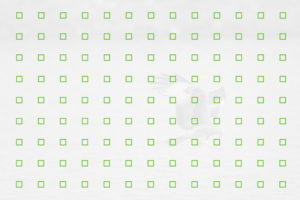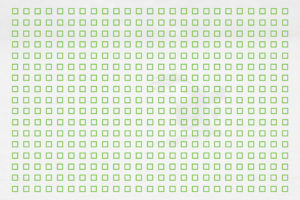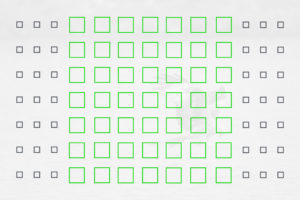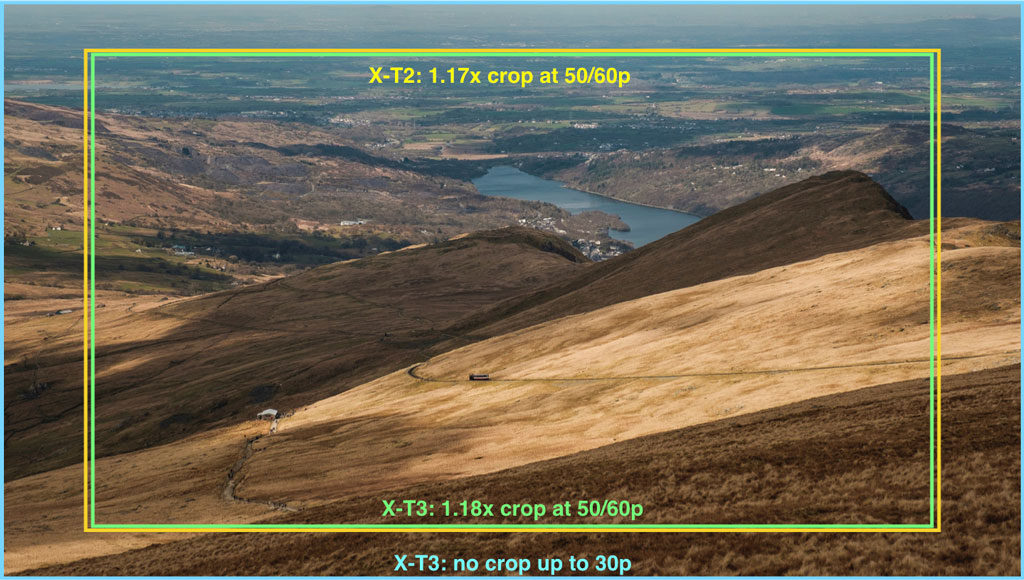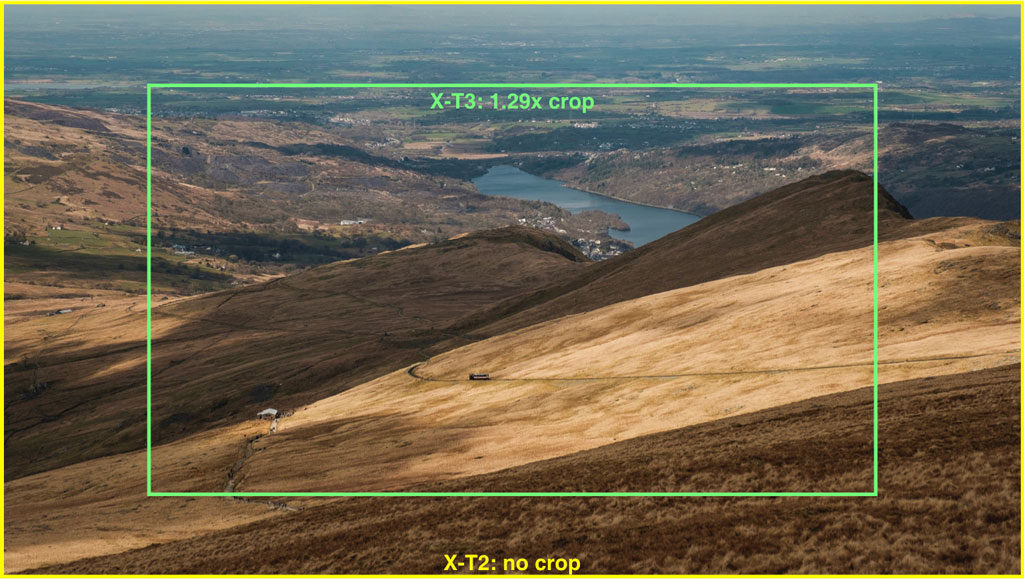The X-T3 is the latest version in Fujifilm’s range of X-T cameras with an APS-C sized sensor. It is built around the same X-Trans technology as other models in the line-up but offers numerous improvements such as a new sensor, an improved autofocus system and far better video specifications, all the while maintaining more or less the same build as its predecessor, the X-T2.
If you currently own the X-T2 or are tempted by the X-T series, you may be curious to know what the differences are between the latest model and its predecessor. In this article, you’ll (hopefully) find all the answers you’re looking for!
Update: our full comparison between the X-T2 and X-T3 is now online!
X-T3 comparison previews:
X-T2 vs X-T3 – X-T3 vs X-H1 – X-T3 vs X-T20 – X-T3 vs a6500 – X-T3 vs A7 III – X-T3 vs Z6
What they have in common:
- body design
- full weather-sealing
- 3-way tilting screen
- shutter speed, ISO, focus, exposure compensation, metering and burst dials
- dual SD card slot with UHS-II compatibility
- microphone input
- 15min (T mode) – 1/8000s mechanical or 15min – 1/32000s electronic shutter speed
- optional battery grip (VPB-XT2 and VPB-XT3, not cross compatible)
Ethics statement: The information supplied in this article is based on official specifications and our personal experience with Fujifilm cameras. We were not asked to write anything about these cameras, nor were we provided with any sort of compensation. Within the article, there are affiliate links. If you decided to buy something after clicking the link, we will receive a small commission. To know more about our ethics, you can visit our full disclosure page. Thank you!
1. X-Trans III vs IV sensor
Although both cameras house an APS-C sized X-Trans sensor, the X-T3 features the new X-Trans IV type with 26.1MP up from 24.3MP on the X-T2. The base ISO is also different with the X-T2 starting from ISO 200 and the X-T3 from ISO 160.
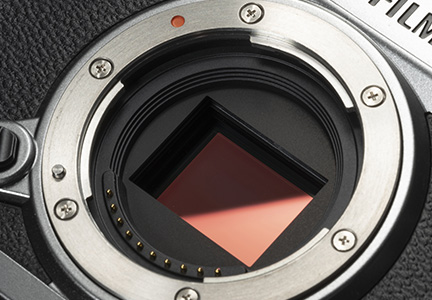
These changes may seem small but the new sensor uses BSI (backside illumination) technology meaning it can gather more light than the X-T2 sensor. Add the new Quad Core X Processor 4, which is three times faster than previous versions, and the X-T3 should have better dynamic range and low-light performance (at least on paper).
According to Fujifilm, the sensor readout is 1.5x faster than the X-T2 which reduces rolling shutter when using the electronic shutter for stills or recording video.
Concerning the ISO range, both cameras can go up to 12800 or 51200 with the extended values. Pull values go down to ISO 80 on the X-T3 or ISO 100 on the X-T2.
The performance of the X-T2 is already excellent up to 12800 ISO and the camera provides very good dynamic range, so we were curious to see how well the BSI sensor improves image quality on the new model. After our full comparison however, we concluded that the differences are minimal.
2. LCD screen and EVF
Both the X-T2 and X-T3 utilise a 3-inch LCD screen that swivels up, down and to the side for vertical shots. They also share the same resolution (1040K dots) and aspect ratio (3:2).
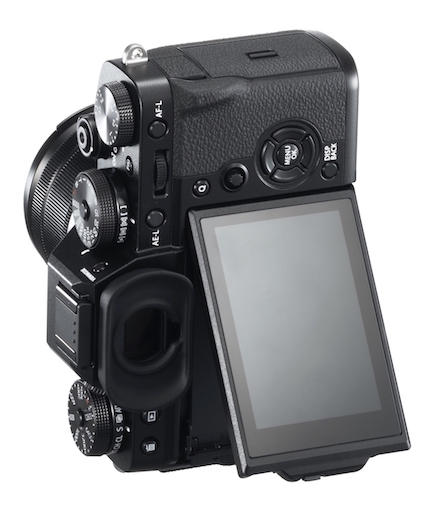
The main difference is that the X-T2’s screen lacks touch sensitivity, whereas the X-T3’s screen can be used to select the autofocus point, focus, take a picture, swipe through images in playback mode and select options on screen. Touch screens are helpful in various scenarios, from adjusting the AF point while looking through the EVF to changing focus in movie mode without causing camera shake.
The X-T3 has an upgraded viewfinder compared to the X-T2, with more resolution (3.69 vs 2.36 million dots) but less magnification (0.75x vs 0.77x). Both are 0.5-inch types with a 23mm eyepoint, 100% field of view and 100fps refresh rate in Boost mode.
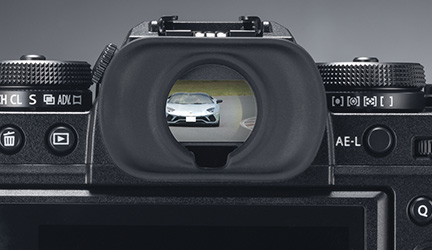
3. Hybrid autofocus system
Fujifilm’s latest models all use a hybrid autofocus system with contrast and phase detection, but the X-T3 comes equipped with the most advanced version to date. Fujifilm claims that the new camera can focus 1.5x faster than its predecessor thanks to the improved processing speed and new focusing algorithm.
In single point AF, it features 117 phase detection points on a 13×9 grid (or 425 points on a 17×25 grid), whereas the X-T2 offers just 91 points on a 13×7 grid (or 325 points on a 13×25 grid). The X-T3 also has four times the number of phase detection pixels (2.16 million) in comparison to the previous model.
Unlike the X-T2 whose phase detection pixels are concentrated at the centre, the X-T3’s pixels cover the almost the entire height and width of the sensor (99%) in all modes except AF Tracking where coverage is slightly less (91% horizontal x 94.5% vertical). Phase detection autofocus in low light is also two stops more sensitive than the X-T2 (-3EV vs -1EV).
Thanks to the power of the new X Processor 4, the X-T3 can also refocus and meter around 1.5x more frequently than the X-T2.
Finally, the performance of face and eye detection have been improved on the new model (2x faster according to Fujifilm), now allowing for eye-AF in C-AF, and face detection when recording 4K.
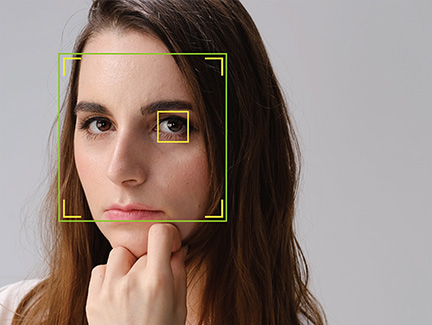
Both models are complete with Fujifilm’s AF-C Custom Settings which allow you to customise the behaviour of the autofocus system according to the movement of the subject. For example, Preset 2 tells the camera to ignore obstacles that enter the focusing area, whereas Preset 5 is ideal for erratically moving subjects.
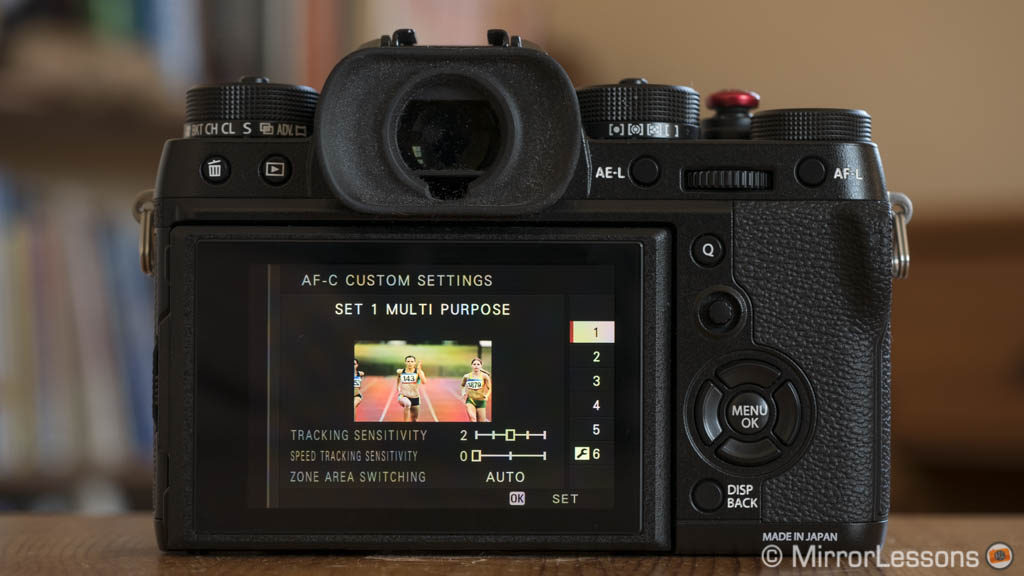
In our extensive tests and comparisons, we always found the X-T2’s performance to be excellent, even for difficult subjects such as birds in flight. The new AF system of the X-T3 brings interesting improvements as you can see in our full comparison.
4. Burst shooting and blackout-free live view
The X-T2 is able to shoot up to 8fps with the mechanical shutter or 14fps with the electronic shutter. Attach the vertical battery grip and the mechanical speed climbs to 11fps.
The X-T3 boasts far more impressive numbers by comparison, being capable of 11fps with the mechanical shutter or 20fps with the electronic shutter without the need for the external battery grip. Turn on the 1.25x crop mode (16.6MP) and the speed rises to an even more impressive 30fps.
Furthermore with the electronic shutter the X-T3 offers a blackout-free experience while maintaining live view at 40fps (or 60fps in crop mode). It works exactly like the blackout-free capabilities of the Sony A9. The X-T3 becomes the second mirrorless camera to maintain an uninterrupted live view of the scene while shooting at high speeds. This sets it apart from other mirrorless cameras that show you the last image taken instead (e.g. Panasonic Lumix G9). Blackout-free shooting can be useful for genres involving fast action as you can more easily follow the subject and react to quick changes in movement.
Happily it is possible to have AF/AE tracking at all speeds.
5. New features
A cool new feature found on the X-T3 is the pre-capture mode, which only works with the electronic shutter. When you half-press the shutter button, the camera starts recording images to its buffer, only keeping the most recent ones once the shutter button is fully depressed. By capturing images just moments before the shutter button is released, the X-T3 makes up for the delay caused by in-camera processing and human reflexes.
With the Sports Finder mode, the sensor is again cropped around 1.25x which gives you 16.6MP files. The EVF or LCD display bright frame lines to show the cropped area but it doesn’t crop the native field of view of the sensor, which means you can see outside the 1.25x area and anticipate the action more effectively. The Sports Finder mode works with the mechanical shutter or first electronic curtain shutter, so the maximum speed is 11fps but the blackouts are shorter at 90ms.
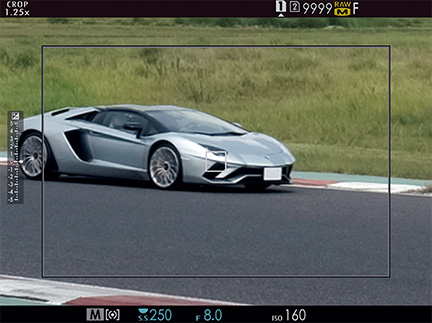
A third new feature is called Digital Microprism. A manual focus assist, it simulates focusing through an old-school SLR viewfinder.
Then we have the Night Vision mode, which turns the LCD to black and red to ease your eyes when shooting in the dark. (The same feature is found on recent Panasonic cameras like the G9.)
6. Video
The X-T3 is a much more advanced video camera than the X-T2 in a number of ways.
First it can record 4K (DCI and UHD) up to 60fps and 4:2:0 10-bit colour. Not only does it become the third mirrorless camera to record 4K/60p internally after the GH5 and GH5s, but it is also the first to do so with a colour depth of 10-bit at 60fps (the GH5 twins can do 4:2:2 10-bit up to 30p however).
You can choose between Long-GOP (IPB) and All-Intra compression, with the latter offering smoother workflow in post production because it requires less power to be decoded on your computer. The maximum data rate with All-I is 400Mbps up to 30p, or 200Mbps up to 60p. The camera uses the H.265 codec when recording in 10-bit as opposed to H.264 in 8-bit.
The X-T2 offers 4K but the maximum frame rate is 30fps, the bitrate is slower at 100Mbps and there is no All-Intra option.
Both cameras can output 4K to the HDMI port. The X-T2 can do so in 4:2:2 8-bit, whereas the X-T3 has 10-bit up to 60fps once again. Note that the X-T3 can record 4K/60p internally up to 200Mbps while simultaneously sending the feed to the HDMI port, so you can record to an SD card and external recorder at the same time.
In Full HD, the maximum frame rate is 120fps on both cameras, but once again the X-T3 has a better data rate (200Mbps vs 100Mbps). There is a 1.29x sensor crop when recording at 120fps with the X-T3, which allows the camera to give better quality, whereas the X-T2 uses the entire width of the sensor but has lower quality (more aliasing).
When recording in 4K, the X-T3 doesn’t crop the sensor at all up to 30fps but a 1.18x crop is applied in 4K 60fps. The X-T2 by comparison crops the sensor by 1.17x regardless of the frame rate.
As for the recording time, the X-T2 is limited to 10 minutes in 4K or 15 minutes in Full HD but attaching the vertical battery grip raises the maximum recording time to 30 minutes in either format. The X-T3 can record for 20 minutes in 4K/60fps, 30 minutes in 4K/30fps and 30 minutes in Full HD.
Both cameras are able to record Fujifilm’s F-Log flat profile internally but a future firmware update for the X-T3 promises to bring hybrid log gamma support in late 2018. F-Log on the new camera has a minimum ISO of 640 (versus 800 on the X-T2). The new camera also gets the Eterna video film simulation mode first introduced on the X-H1.
Other differences found on the X-T3 include the addition of zebra pattern, improved rolling shutter and AF performance, the addition of face detection in movie mode and approximately 12 stops of dynamic range when using the 400% DR setting. Fujifilm also claims to have added a new and more efficient noise reduction algorithm.
Like the X-H1, you can use the silent mode feature which disables all the buttons and dials to avoid any noise, and you change all the settings via the touch screen instead. This also gives you the possibility to set different settings for stills and video.
To summarise, here are all the key differences concerning video recording between the two cameras:
X-T2
- 4K up to 30fps
- No Cinema 4K/DCI
- 4K up to 100Mbps
- 1080p up to 100Mbps
- 1080p in 16:9
- 1080p up to 120fps
- IPB compression
- H.264 codec
- Internal recording in 4:2:0 8-bit
- External recording in 4:2:2 8-bit
- F-Log
- 10min per clip in 4K
- 15min per clip in 1080p
X-T3
- 4K up to 60fps
- Cinema 4K/DCI up to 60fps
- 4K up to 400Mbps
- 1080p up to 200Mbps
- 1080p in 16:9 or 17:9
- 1080p up to 120fps
- IPB or All-I compression
- H.264 and H.265 codecs
- Internal recording in 4:2:0 10-bit
- External recording in 4:2:2 10-bit
- F-Log, Eterna, DR settings
- 30min per clip in 4K
- 30min per clip in 1080p
7. Film simulation modes
The X-T3 comes with a total of 16 film simulation modes including the latest video profile, Eterna, which is characterised by subdued colour presentations and rich shadow tones. You can see what it looks like in the video shot with the X-H1 below:
Also available is a new Monochrome Adjustment function, which works with both the standard Monochrome profile and Acros. According to Fujifilm, it allows you to reproduce warm and cool tones conventionally achieved using specific photographic papers and developers.
Finally we have Colour Chrome Effect which was first introduced on the medium format GFX 50s. Based on Fortia reversal film, it provides deeper colours and gradation in highly saturated subjects such as vivid flowers.
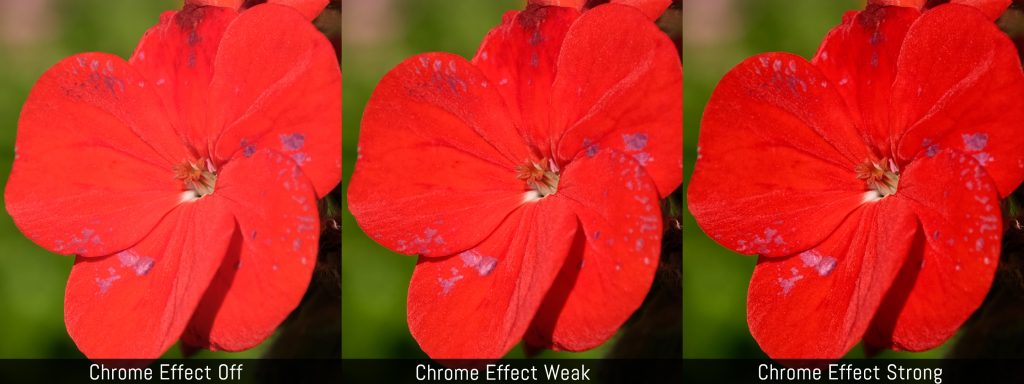
8. Battery life
The two cameras use the same NP-126S battery but it appears that the X-T3, with its CIPA rating of 390 shots, makes more efficient use of the battery energy. The X-T2 is rated at 340 shots by contrast, which is sufficient for a day of light shooting but not enough if you plan to shoot video or take multiple continuous bursts. Of course with its most demanding settings, the new camera drains the battery much more quickly (4K/60p, 30fps with e-shutter, etc.)
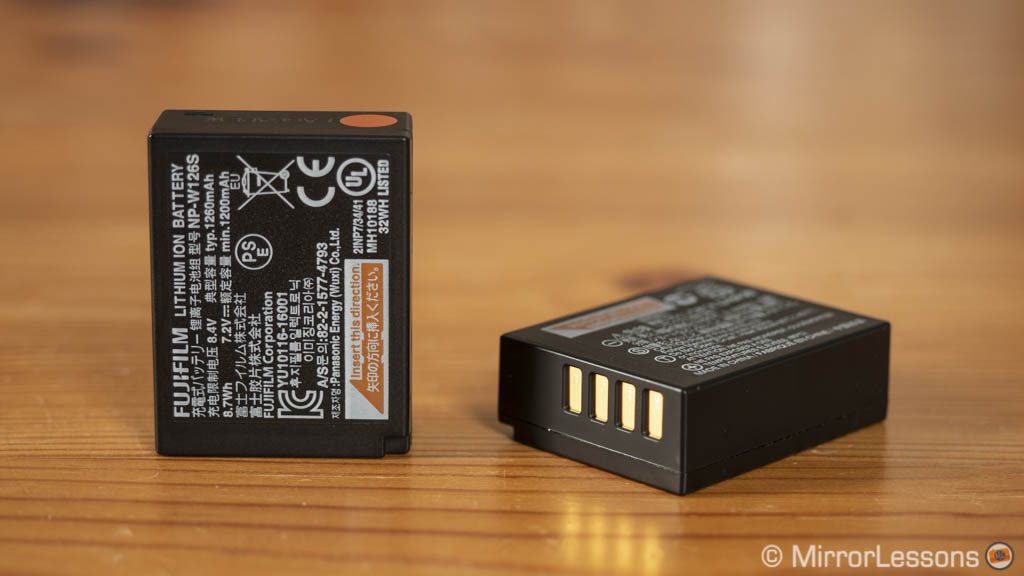
By attaching the vertical battery grip to either camera, you can significantly extend the battery life and they can also be charged via USB.
9. Bluetooth connectivity
Unlike the X-T2 which only has Wi-Fi, the X-T3 also incorporates Bluetooth. Its purpose is to maintain a constant connection between the camera and your smart device, transferring images as you record them without consuming too much battery power.
10. Design
I’ve saved the design for last since there aren’t all that many physical differences between the two cameras.
Although they are the same length and more or less the same height, the X-T3 is marginally deeper and heavier than the X-T2. This is mostly due to the slightly larger grip. You can see the exact measurements below:
- X-T2: 507g | 132.5 x 91.8 x 49.2mm
- X-T3: 539g | 132.5 x 92.8 x 58.8mm
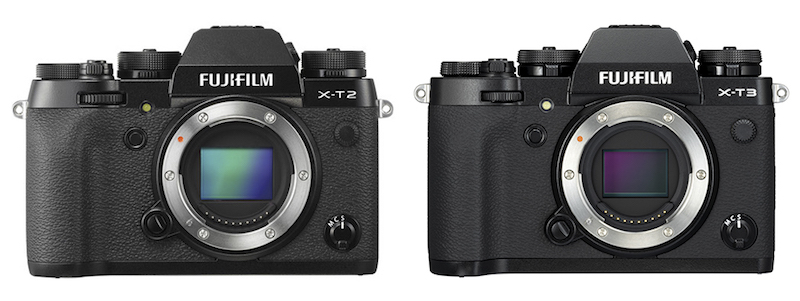
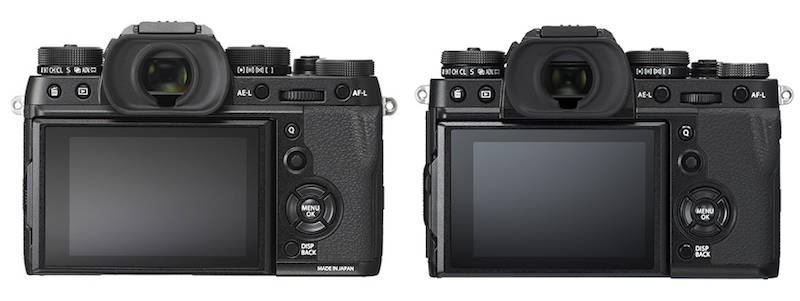

You’ll find an extra 160 value on the ISO dial, as well as marginally thinner top dials similar to those on the X-H1.
The buttons as well as the command dials on the X-T3 are the same found on the X-H1: they are slightly larger and more comfortable to press.
The EVF’s diopter adjustment can now be locked to prevent unwanted adjustments while carrying or using the camera.
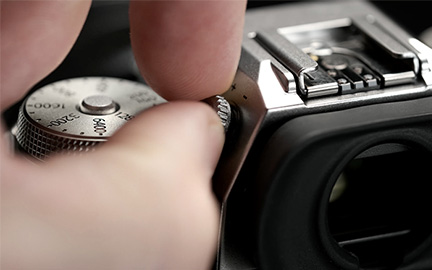
There are also some differences concerning the interface such as the addition of a 3.5mm headphone socket to the X-T3 and a USB 3.1 Type C port in the place of a USB 3.0 port. The cover on the X-T3 can be removed to facilitate connecting various devices when shooting video.
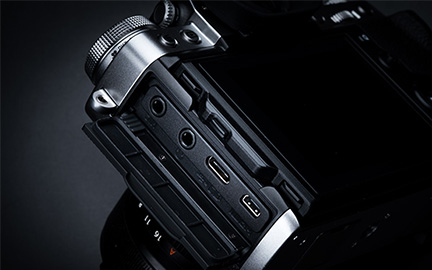
You can purchase the X-T2 in black or graphite silver, whereas the X-T3 will be available in black or plain silver.
Bonus: Price
The X-T3 body is set to hit the shelves with a price tag of $1500 / £1350 / €1530 which is actually less than the X-T2 launch price two years ago. However, because the X-T2 is now two years old, you can usually find it around $1100 / £1250 / €1300, or even less if a promotion or cash-back offer is available.
Conclusion
Update: our full comparison between the X-T2 and X-T3 is now online!
X-T3 comparison previews:
X-T2 vs X-T3 – X-T3 vs X-H1 – X-T3 vs X-T20 – X-T3 vs a6500 – X-T3 vs A7 III – X-T3 vs Z6
As we’ve seen throughout this preview, the X-T3 is as significant an upgrade over its predecessor as the X-T2 was over the X-T1 a couple of years ago. Although big improvements have been made to all departments including image quality and autofocus, we cannot help but be impressed by the incredible video specifications this new camera has to offer, namely 4K/60fps with 10-bit recording, which is in fact a first for any mirrorless camera.
Whether you should upgrade to the X-T3 really depends on two factors: how much serious video or hybrid photography you shoot and how often you work in poor light conditions. I mention the latter because many of the improvements, from the BSI sensor to the increased sensitivity of the AF, are designed to facilitate work in low light. Otherwise the X-T2 remains a solid choice for most genres, especially if stills photography is your main focus.
Of course we will be able to tell you more once we pitch the two cameras against each other for our extensive real world tests!
Check the price of the X-T3 on
Check the price of the X-T2 on

